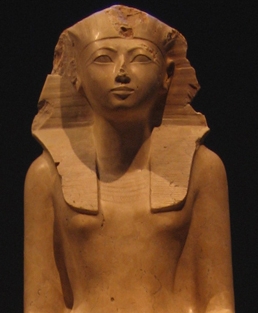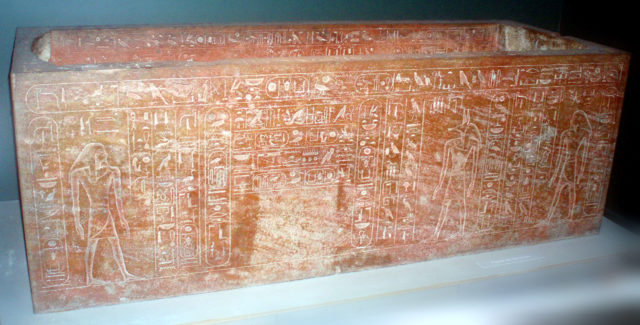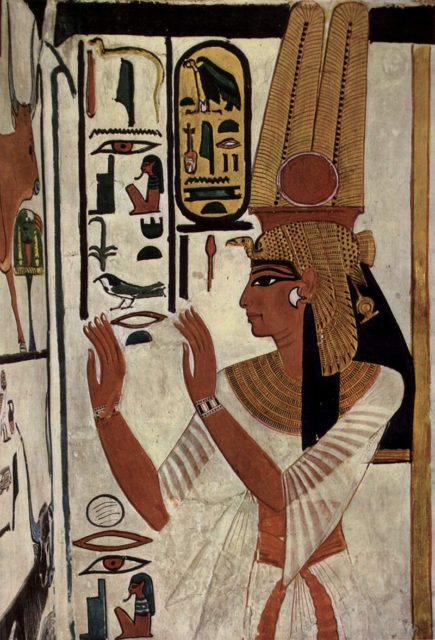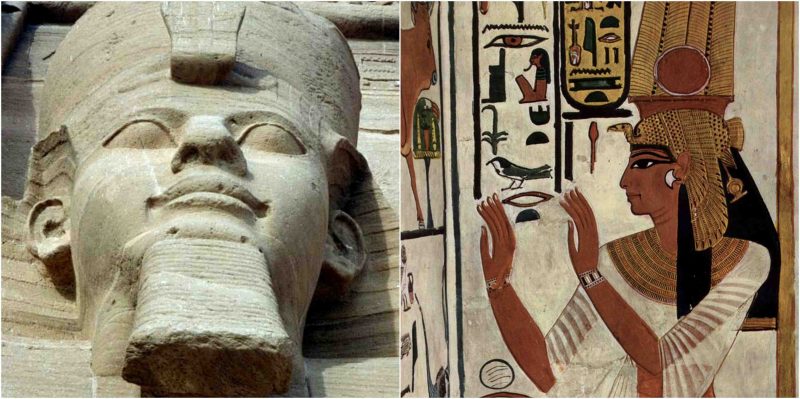Being a butler could be considered honest work, but it may be hellish depending on who the boss is. For the butlers of the ancient Egyptians their journey to the afterlife saw them treated like kings.
When one thinks of ancient Egypt, they generally think about the riches and the pharaohs who were buried with piles of gold and treasures for the afterlife. Well, apparently the butlers were buried with the same amount of respect and wealth as their bosses.

Archaeologists were recently excavating Queen Hatshepsut and King Ramses II’s tombs in order to preserve the beautiful artwork that was painted on the walls. They ended up finding four extra tombs and discovered that they had belonged to the royals’ butlers.
The four tombs have now been opened for the public to view. They contained extremely decorated walls depicting the ancient Egyptian gods, including Osiris and Anubis, who had been particularly associated with the mummification process and the preparation for the afterlife.
Dr. Khaled El-Enany, Egypt’s Minister of Antiquities, had opened up the tombs which date back to the 18th and 19th dynasties. To put it into better terms, they are about 3,500 years old and have been beautifully restored.
The tomb numbered TT 110 belongs to the “Chief Royal Butler of Queen Hatshpsut, Djehuty.” It is located in the Sheikh Abdel Qurna Area on Luxor’s west bank.
The Queen had herself crowned around the year of 1,473 BC. She had changed her name from the female version, Hatshepsut, to the male version, Hatshepsu. She had been born during the time when Egypt had the most advanced civilization in the ancient world. She had taken over the throne from her young stepson Thutmosis III and declared herself pharaoh.
In order for her to be taken seriously, she had worn the traditional clothes of the pharaoh. In fact, she had even worn the normal head dress and a fake beard that was worn by the male pharaohs.
The tomb of her personal butler was shaped like a T and is generally the size of the 18th Dynasty tombs. The tomb has a pillared hall and a burial shaft as well. Although it was found back in 2012, it is now able for visitors to see. The restoration had taken that long due to all of the work required to make it available to the public – the tomb itself was in very poor condition.
The other three tombs found had belonged to Imn Nakht, Nebenmaat, and Kha’Emteri, who had the same title on their tombs: “Servant in the Place of Truth.” This was written during the reign of King Ramses II. The king reigned between the years of 1,279 and 1,213 BC. He is still known as one of the greatest and most powerful pharaohs of the Empire. The king had led a successful military campaign into Canaan and Nubia, resulting in many cities, temples, and monuments being built.
All of the butlers in the tomb had belonged to the same family. Imn Nakht was the father of Nebenmaat. Kha’Emteri was the youngest son.

The tombs share the same entrance, corridor, and ante-chamber which then branch out into the three burial chambers. There is also a mud brick chapel in each tomb. Interestingly, Imn Nakht’s tomb is multicolored, but many of the other tombs found, and those of his sons, only have one color.
Just last month the archaeologists had discovered several carved blocks which most likely were part of an unknown building of Queen Hatshepsut. The depictions had shown how her image had changed once she took over as pharaoh.
There were many monuments that had depicted her like a queen, but most were destroyed, making finding a depiction of her as a woman extremely rare.
The tombs had been discovered by the German Archaeological Institute on the Island of Elephantine, Aswan. One block of the woman’s face and form had been changed to a male image. There was even a lozenge that had borne her name at one point, but it is now scratched away. A member of the Ancient Egyptian Antiquities, Dr. Mahmoud Afify, said that the building with the female form must have been erected during an earlier time, years before her reign.
Hatshepsut is believed to have reigned with no opposition for more than two decades before she died in 1458 BC. All mention of her name were erased by Thutmosis after he had taken power. The representations of her female figure had all been replaced by images of her husband.
There have only been a few buildings that depict her early stages of her career as pharaoh. There have only been a few of the examples found at Karnak, making these new blocks even rarer. The team of archaeologists said that this new discovery gives them some new information about Hatshepsut’s reign.

The field director on the project, Felix Arnold, had said that the building with the blocks most likely was used as a waystation for the festival barque for the god Khnum, the potter god of creation. The building had later been dismantled, and 30 blocks have now been found in the Khnum temple of Nectanebo II, the pharaoh who ruled between 360 and 342 BC.
Some of those blocks had been found in other excavations by members of the Swiss Institute. However, the meaning behind the blocks is now clearer to the experts.
